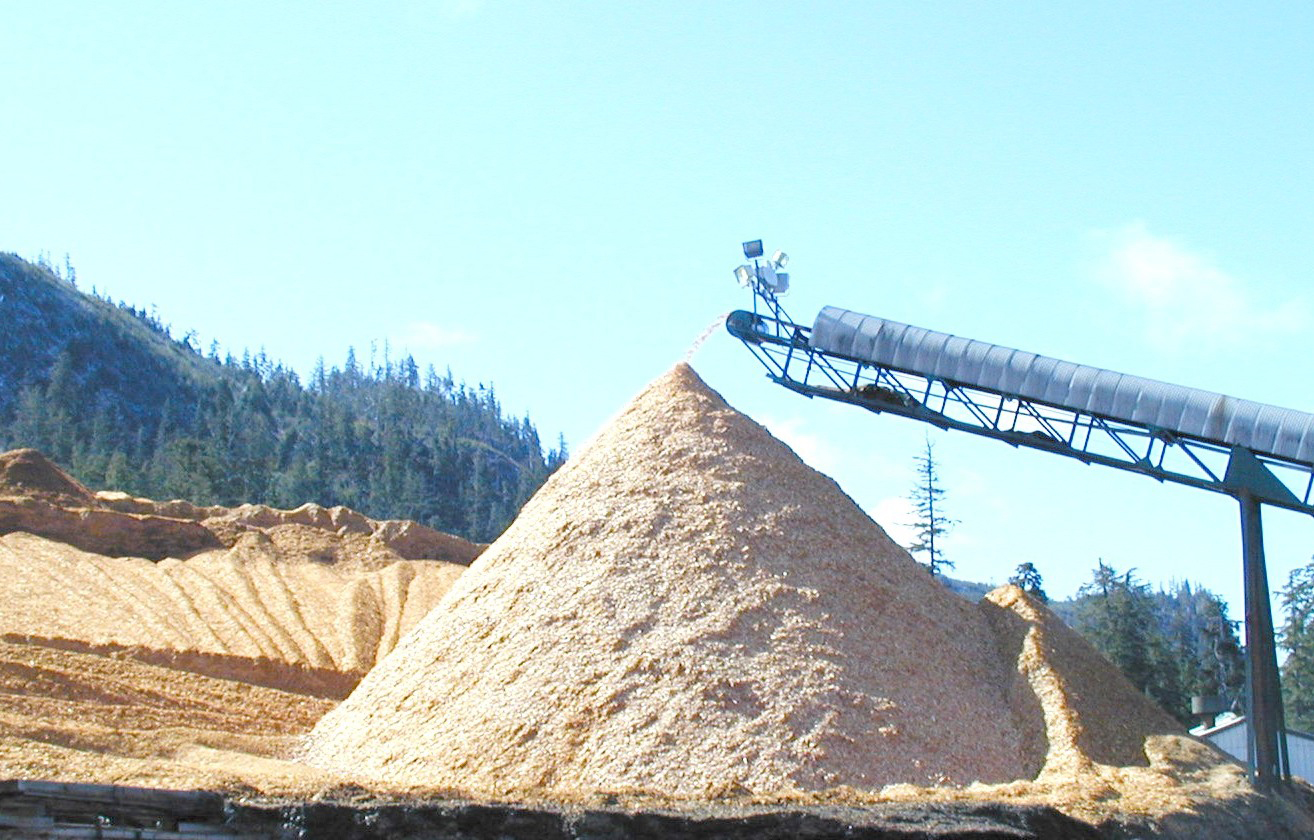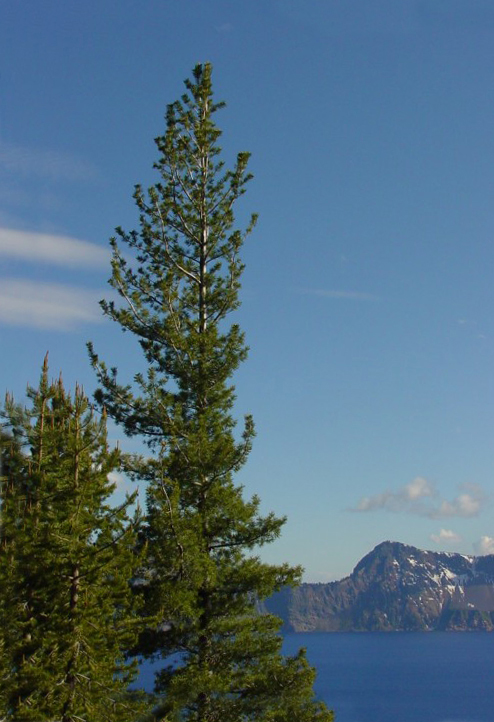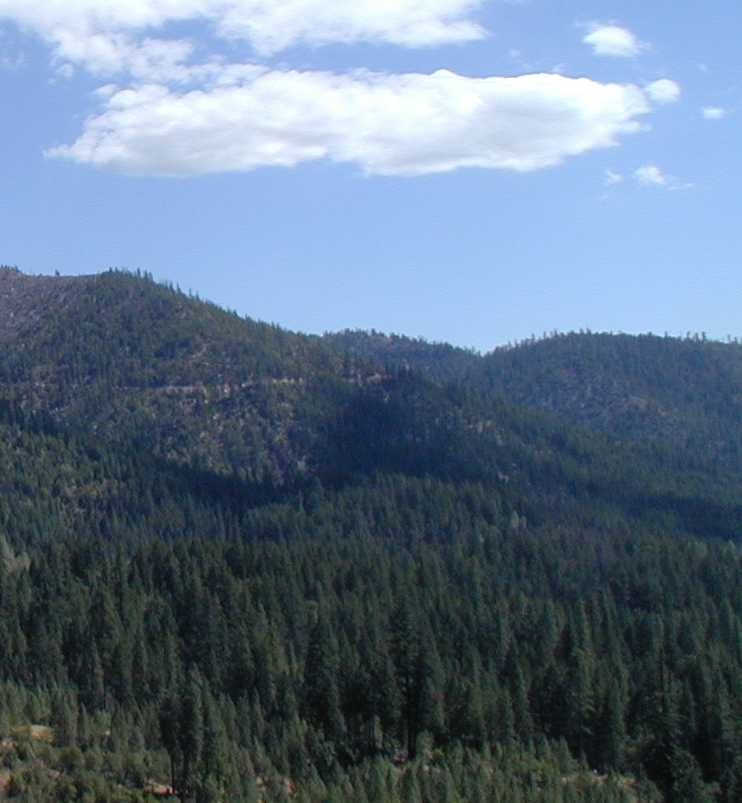Coal Plants Burning Wood
Air Date: Week of November 8, 2013

Wood wastes such as sawdust can be co-fired with coal (photo: Dave Nichols)
Carbon sequestration technology is still experimental, so coal burning power plants are looking for other ways to lower fossil fuel emissions to meet proposed new EPA standards. David Nicholls of the National Forestry Service tells host Steve Curwood about a solution using a renewable resource: burning wood along with coal.
Transcript
CURWOOD: Carbon-capture and sequestration technology is still experimental, so many coal plants are looking for alternative ways to reduce the CO2 from fossil fuels. Some utilities have started mixing their coal with a cheap material that could help them meet the expected EPA targets - wood. Dave Nicholls is a forest products technologist with the US Forest Service Pacific Northwest Research Station in Sitka, Alaska. Welcome to Living on Earth.
NICHOLLS: Thank you for having me.
CURWOOD: So tell me, how does this work? How do utilities, coal-fired power plants, use wood to reduce carbon emissions?
NICHOLLS: Well, woody biomass is a renewable source of energy. There are a number of parts of the country where there’s excess woody biomass that could be blended in with the coal, and then burned; in that manner, the result would be fewer carbon emissions. One of the advantages of wood is that it’s renewable. Coal is stored carbon. Once it’s burned it’s pretty much a one-way street up into the atmosphere, whereas wood, when it’s burned, is more on a short-term cycle that is quickly re-absorbed in new tree growth.
CURWOOD: Now, what do you call this?

David Nicholls, USDA Forest Service, Pacific Northwest Research Station (photo: Dave Nichols)
NICHOLLS: Well the process is called co-firing, and in many cases, it can be a very simple process of just mixing in woody biomass with the coal before it’s burned, and one of the key advantages is that at low levels it can be done fairly inexpensively with only minor changes to the coal plant.
CURWOOD: When you say low levels what are we talking about?
NICHOLLS: Well, most of the time, co-firing is done at the 10 percent level or less, but on occasions it’s done even just a few percent. So if a coal plant is burning - say, 100 tons of coal, and with that, maybe mixing it just one or two tons of woody biomass could help. And given the large size of the coal plants throughout our country, co-firing at even a very small level of say, even one or two percent, could make significant changes.

Residues from sustainable forest management activities can be co-fired with coal (photo: United States Forest Service)
CURWOOD: So, how effective is this strategy in terms of reducing emissions?
NICHOLLS: Well, much of the research has indicated that it would be very effective. Worldwide, over 200 coal facilities have conducted test burns. A lot of these are in Europe. In the US, over 40 coal plants have conducted test burns over the years, and it’s a very feasible and successful way of reducing greenhouse gas emissions.
CURWOOD: How sustainable is this, Dave? You know there’s not an endless supply of wood out there.
NICHOLLS: Right. That’s a good point, and the supply of wood is an important factor as well as the harvesting and transportation costs. For example, in the western states, there’s a lot of beetle killed timber that’s available for use, but the high costs of harvest and transportation in getting that to the mill could limit its availability.
CURWOOD: So even though the pine bark beetle has ruined a lot of forests, it doesn’t make sense to try to recover the energy in those trees.

Many Western forests have been decimated by the pine bark beetle. Beetle-ruined wood can make good candidates for co-firing. (photo: David Nichols)
NICHOLLS: In some cases, that’s correct. If the costs of harvesting and transportation are too high, then the economics just wouldn’t pencil out. In other cases, if the economics are favorable then that could be an opportunity. For example, in the state of Colorado, there are a number of large coal facilities, and also large amounts of beetle killed timber as well.
CURWOOD: How might the burning of wood and coal-fired power plants help reduce the wildfire danger in the west?
NICHOLLS: Well, in general there are large amounts of overstocked forests, and also some beetle killed trees and diseased timber, and one way of looking at it is that if the trees burn out in the woods, all that carbon goes up into the atmosphere unused, but if some of that wood can be co-fired with coal and nearby coal plants, then energy is also generated in a more controlled burning environment.
CURWOOD: But how viable is this over the long term, blending wood with coal? To what extent might this help keep coal power plants open in the years ahead?
NICHOLLS: Well, there’s a great deal of research done in the 1990s at a number of coal plants with co-firing, so I think it’s a very viable strategy, and it can be used for fairly low capital investment when it’s done on small levels at coal facilities. So I think until methods are sequestering CO2 underground, which probably could be at least a decade into the future, I think that co-firing with wood and coal is a very viable bridge strategy for increasing our use of renewable resources while reducing CO2.
CURWOOD: Dave Nicholls is a Forest Product Technologist with the United States Forest Service in Sitka, Alaska. Thanks so much, Dave, for taking this time.
NICHOLLS: My pleasure.
Links
Report—Biomass Co-firing: A Renewable Alternative for Utilities
Report—Biomass Co-firing in Coal-Fired Boilers
Check out the Wood Chip Burning Plant at Schiller Station in Portsmouth, New Hampshire
Living on Earth wants to hear from you!
Living on Earth
62 Calef Highway, Suite 212
Lee, NH 03861
Telephone: 617-287-4121
E-mail: comments@loe.org
Newsletter [Click here]
Donate to Living on Earth!
Living on Earth is an independent media program and relies entirely on contributions from listeners and institutions supporting public service. Please donate now to preserve an independent environmental voice.
NewsletterLiving on Earth offers a weekly delivery of the show's rundown to your mailbox. Sign up for our newsletter today!
 Sailors For The Sea: Be the change you want to sea.
Sailors For The Sea: Be the change you want to sea.
 The Grantham Foundation for the Protection of the Environment: Committed to protecting and improving the health of the global environment.
The Grantham Foundation for the Protection of the Environment: Committed to protecting and improving the health of the global environment.
 Contribute to Living on Earth and receive, as our gift to you, an archival print of one of Mark Seth Lender's extraordinary wildlife photographs. Follow the link to see Mark's current collection of photographs.
Contribute to Living on Earth and receive, as our gift to you, an archival print of one of Mark Seth Lender's extraordinary wildlife photographs. Follow the link to see Mark's current collection of photographs.
 Buy a signed copy of Mark Seth Lender's book Smeagull the Seagull & support Living on Earth
Buy a signed copy of Mark Seth Lender's book Smeagull the Seagull & support Living on Earth

